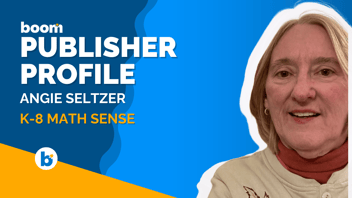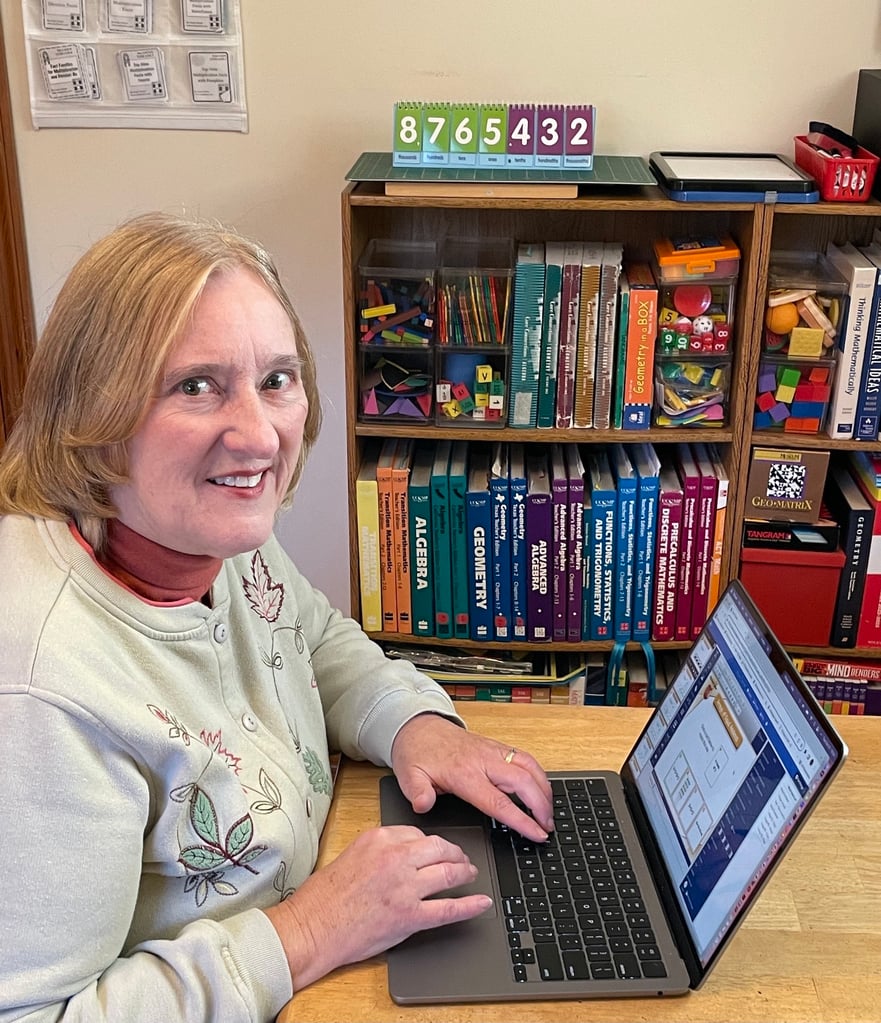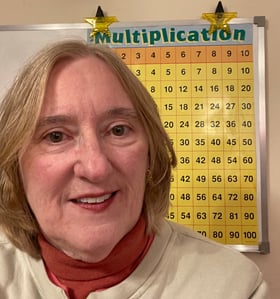
As a Premier Publisher, what unique insights do you bring to curriculum design and educational technology?
I have a robust foundation in mathematics education and curriculum development through my education and experience. For most of my career, I was an editor of mathematics textbooks and wrote print and digital assessment supplements for major publishers. This work gave me a deep understanding of the state standards, developmental progressions, and the specific needs of students at various grade levels. I know how to write engaging and targeted educational materials that build upon students’ previously acquired skills and prepare them for upcoming challenges.
In addition, as a project manager for publishers, I was involved with design decisions. By working with top-notch designers, I gained a critical understanding of how to create resources that are not only comprehensive but also clear and user-friendly. This skill is invaluable in ensuring educators, students, and parents can easily navigate and understand the materials, enhancing the overall learning experience.

What inspired you to start creating digital learning experiences for students and teachers?
I launched my own business to have a more flexible schedule, allowing me to write engaging mathematics activities and tutor mathematics to students of all ages. These students enjoy testing my activities. At first, I focused on printable math playing card sets to be used in elementary and middle school classrooms. I now sell more than 100 unique card sets, each with various representations for students to match during easy-to-learn games and activities. By matching and connecting representations, students develop and deepen their math sense. When I learned about Boom and the self-checking feature, I began creating digital versions that included the same playing card images as the printable playing cards. Two HUGE advantages of the Boom Card versions are immediate feedback for the student and tracking features for the teacher. All my math playing card sets now have digital versions on the Boom platform. (The printable cards are now also available in the Boom Store.)
Could you share a story about the most significant or memorable impact you’ve witnessed from one of your popular Boom Card decks?
My resources have gotten thousands of 5-star reviews from teachers. Teachers who use the digital versions frequently comment, “Easy-to-use, students loved it, students were engaged…This got students to think, and great to track progress.”
The students who come to me for tutoring frequently ask to do activities with my math cards. The cards make a significant impact on students. For example, instead of focusing on recipes or memorizing procedures for manipulating numbers, students focus on the models and how they relate to other models, math expressions, and/or values. Students learn to make sense of the answers, building conceptual understanding that supports procedural fluency.

What tips can you share with emerging publishers on maximizing instructional impact while minimizing prep time?
I have a few key suggestions for emerging publishers of mathematics materials:
- Have a specific instructional goal or objective for your activity. Look at the related objectives/standards from earlier or later years to ensure you are on target.
- Try to simplify the wording and/or offer narration.
- Be creative rather than have students view a math computation problem and answer choices.
- Try to enhance your questions with diagrams or real-world contexts to focus on meaning.
How has becoming a Premier Publisher impacted your approach to designing curriculum?
I’m glad to have been honored as a Premier Publisher! It validates my approach of carefully structuring activities to build on key concepts in fun ways.
How do you ensure your materials meet the high standards required for Premier Publishers, especially regarding alignment with learning goals and state standards?
At about the same time I began creating math card sets, I developed a simplified yet comprehensive checklist of goals for Common Core Math in Kindergarten through Grade 8.
Although the math goals in my checklists are based on Common Core, the goals are easy to locate even if a state is not using Common Core. And it’s easy to compare goals across grades.
I created the list of goals based on my vast curriculum and publishing experience. On a prior project for a major publisher, I compared and made spreadsheets of mathematics standards across about 15 states. That work further enhanced my understanding of pedagogical requirements and the progression from year to year.
Thus, I frequently refer to the checklist to ensure that my math activities align with my learning goals. These goals lists are now accessible for free in the printable section of my Boom Store.
What are some ways you make your Boom Cards adaptable and inclusive for all types of learners?
My decks include images of math playing cards that can be matched in various ways. Specifically, math cards have nine different “values,” with four cards with the same “value,” including models and mathematical expressions. There are few words, yet the images can spur discussion among students or between a teacher/tutor and one student. Even students with limited English can discuss math with their peers who speak their language. These discussions and insights lead to a deeper understanding of the concepts.

What tips or strategies can you share?
When using printed cards, teachers can easily choose two of the four types of cards based on the suits. For example, consider the printable math cards for the set Understanding Area of a Rectangle. The four suits are triangles, squares, circles, and stars. The triangle cards show rectangles composed of small squares. The squares show verbal expressions, circles are multiplication expressions, and stars are values. A rectangle with four rows of six squares can be matched to “4 rows of 6 squares”, “4 x 6”, or “24”. If a teacher wants to emphasize the connection between rectangles and multiplication, the teacher can simply have students match the nine cards in the triangles suit to 9 cards in the circles suit. To check a student’s fluency with multiplication, a teacher can have students match the multiplication expressions to the products (the circles and stars).
What role can publishers play in supporting teacher self-care and preventing burnout?
Publishers need to offer “ready-to-go” activities that support the learning objectives. Teachers have so much on their plates that the time for creating activities is limited. Teachers will be less likely to experience burnout if they have easy access to engaging and efficient activities such as Boom Cards.
Check out some of Angie’s favorite decks!
Interested in being featured on our blog? Learn about opportunities to share your unique educational journey with us. Click here to find out how!



